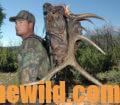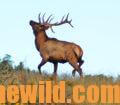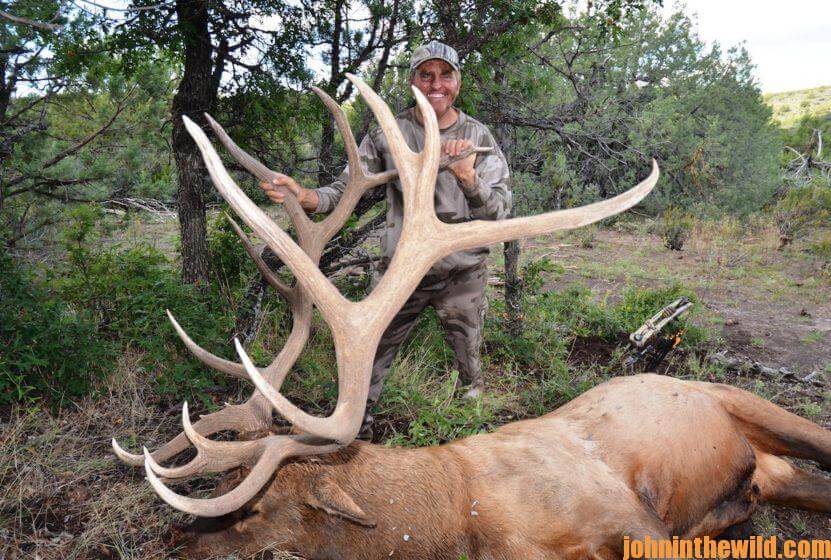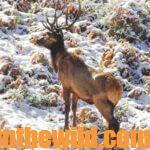Editor’s Note: In the world of archery, Arizona is one of the most-recognized names in the history of competition shooting and hunting elk with a bow. Randy Ulmer has used his tournament skills to become one of the most-efficient and accurate trophy elk hunters ever. This week Ulmer will help you learn how to get in close to a big bull elk with a bow.
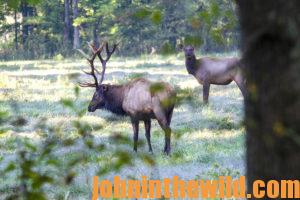 Although Randy Ulmer may bugle to elks early in the morning to determine their location, he seldom deliberately calls an elk to him. He prefers to stalk in close for the shot. “Trophy bull elk are old bulls,” Ulmer explains. “These big, 7- to 12-year-old bulls I hunt have survived many hunting seasons. Because I’ve hunted elk for years, I usually can distinguish between a hunter’s calling and a bull’s or a cow’s call. I believe an old bull can tell better than a young bull the call of a hunter from another elk. I think older bulls take the position that they don’t know whether they hear a hunter or an elk, but they won’t risk getting too close to find out. I’ve found often these older bulls will avoid any type of calling.”
Although Randy Ulmer may bugle to elks early in the morning to determine their location, he seldom deliberately calls an elk to him. He prefers to stalk in close for the shot. “Trophy bull elk are old bulls,” Ulmer explains. “These big, 7- to 12-year-old bulls I hunt have survived many hunting seasons. Because I’ve hunted elk for years, I usually can distinguish between a hunter’s calling and a bull’s or a cow’s call. I believe an old bull can tell better than a young bull the call of a hunter from another elk. I think older bulls take the position that they don’t know whether they hear a hunter or an elk, but they won’t risk getting too close to find out. I’ve found often these older bulls will avoid any type of calling.”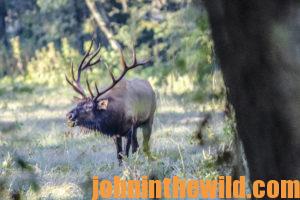
Ulmer also knows when you call to animals, they come in looking for you. Then the elk can spot you easier. Ulmer doesn’t want the elk he hunts to look for or expect any type of movement. His entire stalking technique depends on the animal’s not seeing, smelling or hearing him. “I will bugle sometimes early in the morning before daylight,” Ulmer emphasizes. “I believe the old bulls don’t gather harems as frequently as young bulls. These nomadic, big bulls must travel the countryside hoping to find a receptive cow.” Ulmer has learned that these older-age-class trophy bulls travel at night listening for clustered bugling. “When more than two bulls bugle in an area, the older bull will come to this location because he knows a cow has entered into or just come out of heat,” Ulmer says. “If I hear a large number of bugling bulls, I believe I’ll find an older, bigger bull moving in to breed the cow. This older bull doesn’t necessarily stay with the harem, waiting for a cow to come into heat. He lets the other bulls announce where they’ve discovered the hot cow. Because of his size and strength, he can move into the harem and breed the estrous cow. Therefore I go to areas where I hear clustered bugling because I think the old bull will move to the same place. He plans to meet the cows, and I want to meet him.”
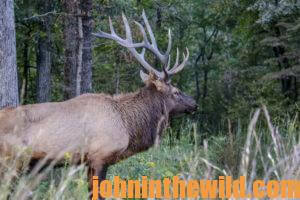
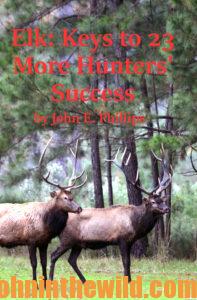 To learn more about hunting elk successfully, check out John E. Phillips’ book, “Elk: Keys to 23 More Hunters’ Success,” available in Kindle https://www.amazon.com/ and soon to be available in print and Audible versions. You may have to copy and paste this click into your browser. (When you click on this book, notice on the left where Amazon allows you to read 10% of the book for free).
To learn more about hunting elk successfully, check out John E. Phillips’ book, “Elk: Keys to 23 More Hunters’ Success,” available in Kindle https://www.amazon.com/ and soon to be available in print and Audible versions. You may have to copy and paste this click into your browser. (When you click on this book, notice on the left where Amazon allows you to read 10% of the book for free).
Tomorrow: How to Take Trophy Elk by Bowhunting

